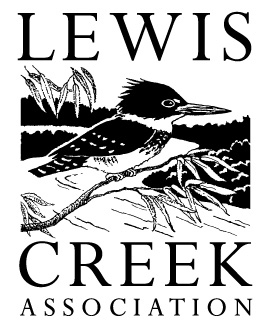By Ariel Toohey and Alex Wemple, SCS Students
Have you ever wondered if the water in Lake Champlain is clean? Or how it gets there? Last year, the 7th graders on the Shelburne Community School Yellow Team did too! We worked with the Lewis Creek Association (LCA) to learn about how water gets to Lake Champlain and what we could do to keep the water cleaner. LCA has worked with CVSD for 5 years, to help improve water quality on school campuses. They recently coordinated the design and construction of the rain garden in the center of the bus circle as part of their Ahead of the Storm program (https://www.lewiscreek.org/ahead-of-the-storm). Here at SCS we noticed one of the parking lots had runoff going straight down into a stream that led to McCabe’s Brook, which ended up going directly into Lake Champlain. Parking lots are full of oil, road salt, chemicals, and other pollutants that we do not want in the lake or other local bodies of water. When it rains, the water picks up all of that and brings it wherever the parking lot drains. Our mission was to find a way to create an eco-friendly system that would filter the pollutants out of the water before it made its way into the stream, which has poor water quality.
Area of filter strip before construction
Students broke out into groups of about five to work on their design for a filter strip, an area of plants that helps clean up water as it leaves the parking lot. One person would work on plants, another on obstacles/constraints, another on soils, etc. The group would meet together in each class with their research done, and eventually come up with a concept for a filter strip! Once all groups were done with their design, we shared our concepts with the Lewis Creek Association and their engineer, and they took our ideas and merged them together with their own, and got to work on constructing the filter strip.
Some of the main things we thought about while doing research and starting to design our projects were which kinds of plants and soil would be best and the most efficient way to filter out pollutants. One of the main components of our project was the 3 S’s. The 3 S’s stand for slow down, spread out, and sink in. When thinking about the 3 S’s, we chose plants, soils and rocks that would help to either slow the water down, spread it out, or sink it into the ground. Sometimes plants or other components would do more than one!
At the end of our time working on our rain garden designs we had a presentation to Kate Kelly (LCA), their engineer, and a few other people that worked in construction and knew about filter strips. Each group talked to the people that came in, and described why they used each of the plants and soils etc., and talked about how they connected to the 3 S’s. The final design included some rocks directly off the parking lot that would slow water down and spread it out, and new native plants on a more gradual slope to soak up some of the pollutants and water before it goes into the ditch and on to the brook and lake.
Filter strip post-construction
Throughout this project we learned a lot about the elements of a filter strip, the Lake Champlain watershed, and improving water quality in general. If you are a landowner wondering how you can improve your water quality make sure you check out the video from the Lewis Creek Association at https://www.lewiscreek.org/water-quality-videos! If you have any questions you can contact Kate Kelly (Program Manager for Lewis Creek Association, at lewiscreekorg@gmail.com or 488-5203).
This project was funded by an agreement awarded by the Environmental Protection Agency and by the Great Lakes Fishery Commission to the New England Interstate Water Pollution Control Commission in partnership with the Lake Champlain Basin Program. NEIWPCC manages LCBP’s personnel, contract, grant, and budget tasks and provides input on the program’s activities through a partnership with the LCBP Steering Committee. The viewpoints expressed here do not necessarily represent those of NEIWPCC, the LCBP Steering Committee, GLFC, nor does mention of trade names, commercial products, or causes constitute endorsement or recommendation for use.



